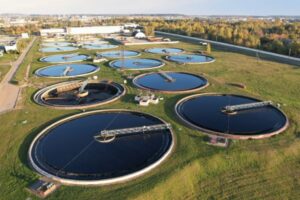Public-Private Partnerships (PPPs) are collaborative agreements between a government agency and a private sector company for the financing, construction, operation, and maintenance of public infrastructure. Traditionally used for large-scale projects like roads and bridges, this model is increasingly being adopted to tackle the complex challenges of building a sustainable and resilient future. By combining the public sector’s mandate for public good with the private sector’s financial resources and innovation, PPPs offer a powerful framework for developing environmentally and socially conscious infrastructure.
The Role of PPPs in Promoting Sustainability
Sustainable infrastructure goes beyond simply being environmentally friendly; it encompasses economic viability, social equity, and long-term resilience. PPPs are well-suited to address these multi-faceted requirements through several key mechanisms:
Access to Private Capital: Sustainable projects often require significant upfront investment in advanced technology and durable materials. PPPs can unlock private capital to supplement public budgets, enabling projects that might otherwise be delayed or unfeasible due to funding constraints. This financial flexibility can accelerate the transition to green technologies.
Innovation and Efficiency: The private sector is often a driver of innovation. In a PPP, the private partner is incentivized to find the most efficient and cost-effective solutions over the entire life cycle of the asset. This can lead to the adoption of cutting-edge technologies like smart grids, advanced water recycling systems, and energy-efficient building materials, which directly contribute to sustainability goals.
Risk Sharing and Performance-Based Incentives: One of the core benefits of a PPP is the ability to transfer project risk to the party best equipped to manage it. This includes risks related to construction delays, cost overruns, and long-term maintenance. Contracts can be structured to tie the private partner’s payment to specific performance metrics, such as a project’s energy efficiency, waste reduction targets, or water conservation. This incentivizes a focus on long-term sustainability rather than just short-term completion.
Applied Innovation: The Clean Stream Fuels Model
The services offered by companies specializing in advanced waste conversion, such as Clean Stream Fuels, provide a compelling real-world application of the sustainable PPP model, particularly for municipal waste and water treatment agencies. Notably, Clean Stream Fuels is currently engaged in several Public-Private Partnerships focused on the comprehensive treatment of wastewater and the creation of potable water, expanding their role beyond energy production to critical water resource management.
Clean Stream Fuels’ innovation centers on Hydrothermal Liquefaction (HTL), a cutting-edge waste-to-energy technology. This system converts diverse organic waste streams—like wastewater sludge (biosolids), agricultural byproducts, and food waste—into valuable, storable, and transportable renewable resources:
- Biocrude: A versatile intermediate product that can be refined into sustainable transportation fuels and biofuels.
- Biogas/Renewable Natural Gas (RNG): A high-value gas used for electricity generation, heating, or vehicle fuel.
- High-Energy Briquettes: Used as a clean, solid “drop-in” fuel for heat and power.
This model directly addresses multiple PPP objectives: it utilizes private technology (HTL) to solve a critical public challenge (waste management and disposal), creates a dual revenue stream (waste tipping fees and fuel sales), and embeds sustainability by reducing landfill volume, lowering methane emissions, and securing a local, clean energy supply. The partnership structure allows government agencies to rapidly deploy this capital-intensive technology without bearing the full financial and technological risk.
Key Elements for a Successful Sustainable PPP
For a PPP to truly deliver on its sustainability promises, it must be carefully structured and governed. The following elements are crucial:
- Clear and Measurable Sustainability Goals: The partnership’s success should be defined not only by financial returns but also by its environmental and social impact. Contracts must include explicit, measurable, and enforceable sustainability targets from the outset.
- Life-Cycle Approach: A sustainable PPP contract should consider the full life-cycle of the asset, from design and construction to operation, maintenance, and end-of-life considerations. This approach encourages the use of high-quality, durable materials and designs that minimize resource consumption and waste over decades.
- Public Engagement and Transparency: Open communication with the public and stakeholders is vital to building trust and ensuring that the project aligns with community needs and values. Transparency in the procurement and operational phases helps to hold all partners accountable.
Challenges and Considerations
While the PPP model holds great promise, it is not without challenges. These projects can be highly complex to structure and negotiate, often leading to high transaction costs. Ensuring public accountability and preventing a “lock-in” to outdated technology over a long contract period requires robust governance and a forward-looking approach. Despite these complexities, when executed thoughtfully, PPPs can be a powerful instrument for bridging the gap between current infrastructure needs and the long-term imperative of building a sustainable future.



